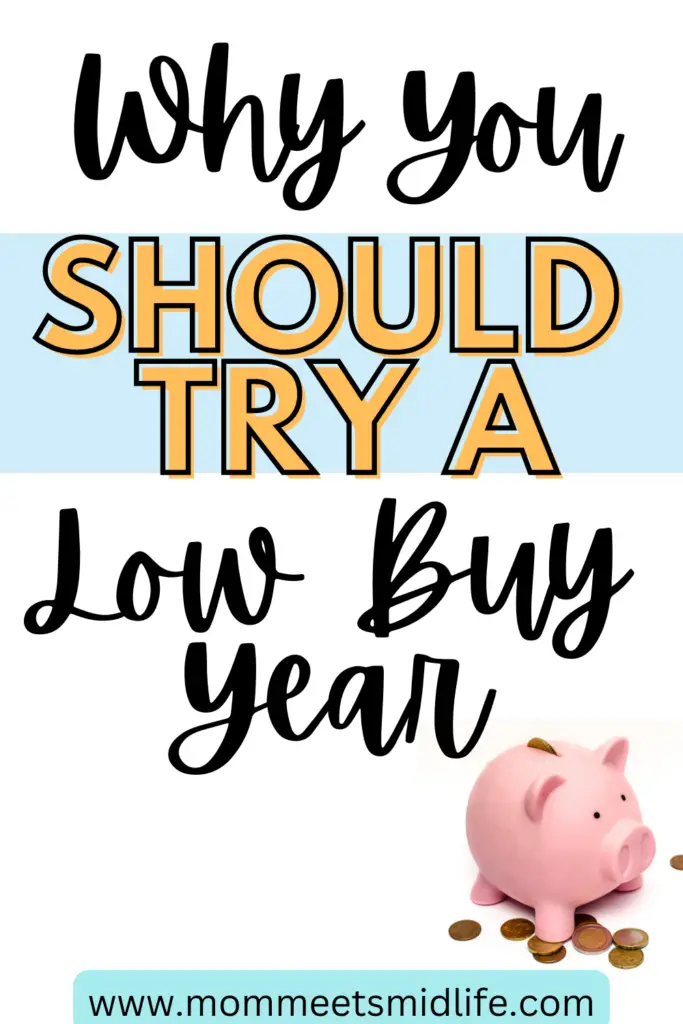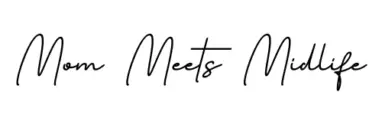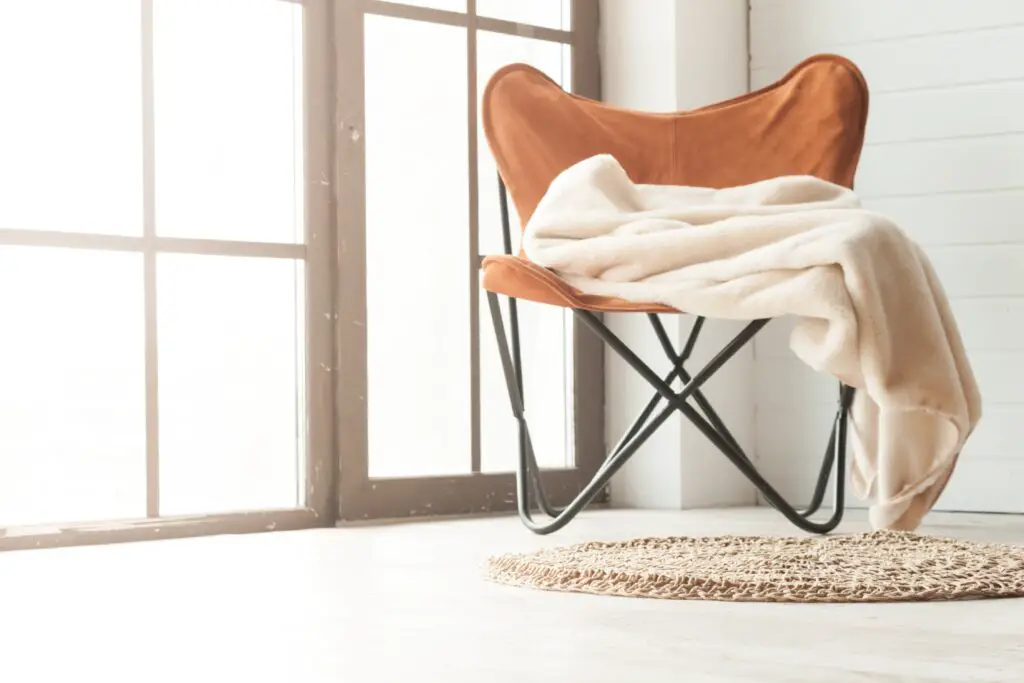Last Updated on March 12, 2023 by Erin
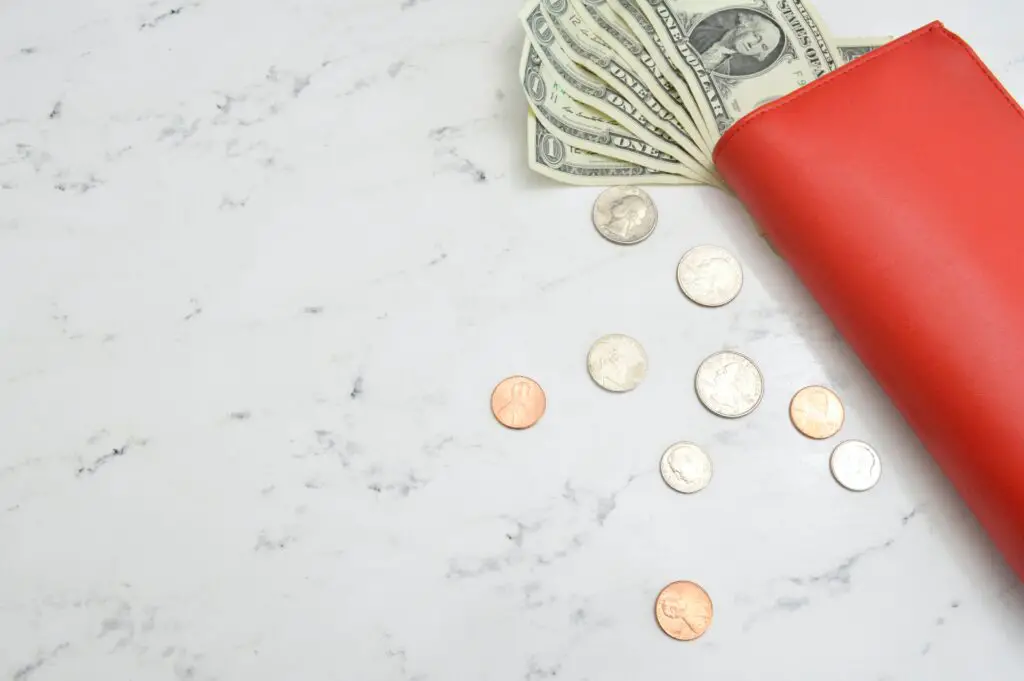
Living on a tight budget can be challenging, especially if you’re used to certain spending habits. However, sometimes it’s necessary to cut back on expenses in order to save money and improve your financial situation. One way to do this is to try a “low buy” year, which involves setting a strict budget for yourself and sticking to it for an entire year.
Since January, my husband and I have committed to reducing our spending and examining our spending habits. I am making a midlife career change and we want to make sure we are financially able to handle the change, while I work to establish other sources of income. We are also trying to increase our real estate portfolio and save up enough for a few down payments. It sounds like a tall order, but absolutely achievable with some changes to our budget and spending. A low buy year is a great fit for our family.
Here are some tips and benefits of trying a low buy year:
**This post contains affiliate links. This means if you click and buy, I may receive a small commission (at zero cost to you). Please see my full disclosure policy for details.**
Tips for a Low Buy Year:
- Create a budget:
- The first step in a low buy year is to create a budget. This involves tracking your expenses and income to determine how much you can afford to spend each month on different categories like housing, food, transportation, entertainment, and so on. You can use a spreadsheet or a budgeting app to keep track of your spending. I use Empower (formerly known as Personal Capital) and love it.
- Cut back on discretionary spending:
- Discretionary spending refers to expenses that are not necessary for your basic needs, such as eating out, shopping, or going to the movies. To save money, you can try to reduce or eliminate these expenses altogether, or find cheaper alternatives like cooking at home, borrowing books from the library, or attending free events.
- Last year I discovered I could read library books on my Amazon Kindle device. I read 86 books for FREE in 2022. It was amazing.
- Shop your house:
- You might be surprised what you have hiding in your closet or basement storage. I refreshed our home decor just by going through old boxes.
- Borrow from friends and family:
- If it’s something you would only use once in a while, see if you can loan it from someone else. We do this with my parents’ carpet steam cleaner. If it’s a special event, borrow a dress from a friend. No need to invest in something you would only use 1-2 times a year.
- Declutter:
- When you sort through all the things you own, you might discover things you forgot you owned. You can also sell the things you don’t need anymore and make decent money. My husband has made hundreds of dollars just by selling things on Facebook Marketplace. I personally resell clothes online.
- Minimalism is a lifestyle that has forced me to appreciate the things I already have and to be more content with less. It’s a great way to live.

Benefits of a Low Buy Year:
- Reduced financial stress:
- Living on a tight budget can be stressful, but it can also help reduce financial stress in the long run. It can also be a lot of fun when you get creative! By eliminating unnecessary expenses and prioritizing your spending, you can feel more in control of your finances and less worried about money.
- Increased savings:
- One of the main benefits of a low buy year is that it can help you save more money. By reducing your expenses and finding ways to earn extra income, you can build up your emergency fund, pay off debt, or save for a long-term goal like a down payment on a home.
- Changed spending habits:
- A low buy year can also help you change your spending habits for the better. By becoming more mindful of your spending and focusing on what’s truly important, you can learn to make better financial decisions and prioritize your long-term goals.
How Is a Low Buy Year Different from a No Buy Year
Here are some key differences between the two:
- What they entail:
- A “no buy” year involves committing to not buying anything beyond what is absolutely essential. This means cutting out all non-essential purchases, including clothes, entertainment, and even food that’s not necessary for survival.
- On the other hand, a “low buy” year involves still allowing yourself to make purchases, but in a much more limited and intentional way. You might set a specific budget for discretionary spending, or only allow yourself to make purchases under certain circumstances.
- Level of strictness:
- A “no buy” year is generally considered to be the more strict of the two approaches, as it involves completely eliminating non-essential spending.
- A “low buy” year allows for some flexibility and allows you to make occasional purchases if they align with your goals and values.
- Focus on long-term habits:
- Both a “no buy” year and a “low buy” year are designed to help you reassess your spending habits and values. However, a “no buy” year is often seen as a more extreme approach that may be difficult to sustain in the long term, while a “low buy” year is designed to help you build more sustainable habits around spending and consumption that you can carry forward into the future.
When Would You Do a Low Buy or No Buy Year?
Ultimately, whether you choose to try a “low buy” year or a “no buy” year will depend on your personal goals and circumstances. A “no buy” year may be a good option if you’re looking to make a drastic change to your spending habits, or if you need to save money quickly.
A “low buy” year may be a better fit if you want to make more sustainable changes to your spending habits that you can carry forward into the future.
Printable Companion for a Low Buy Year
I have put together a bundle of printable PDFs to help you on your low buy journey. Forms include: monthly budget tracker, savings tracker, weekly meal planner, closet inventory, wishlist planner, and gratitude journal.
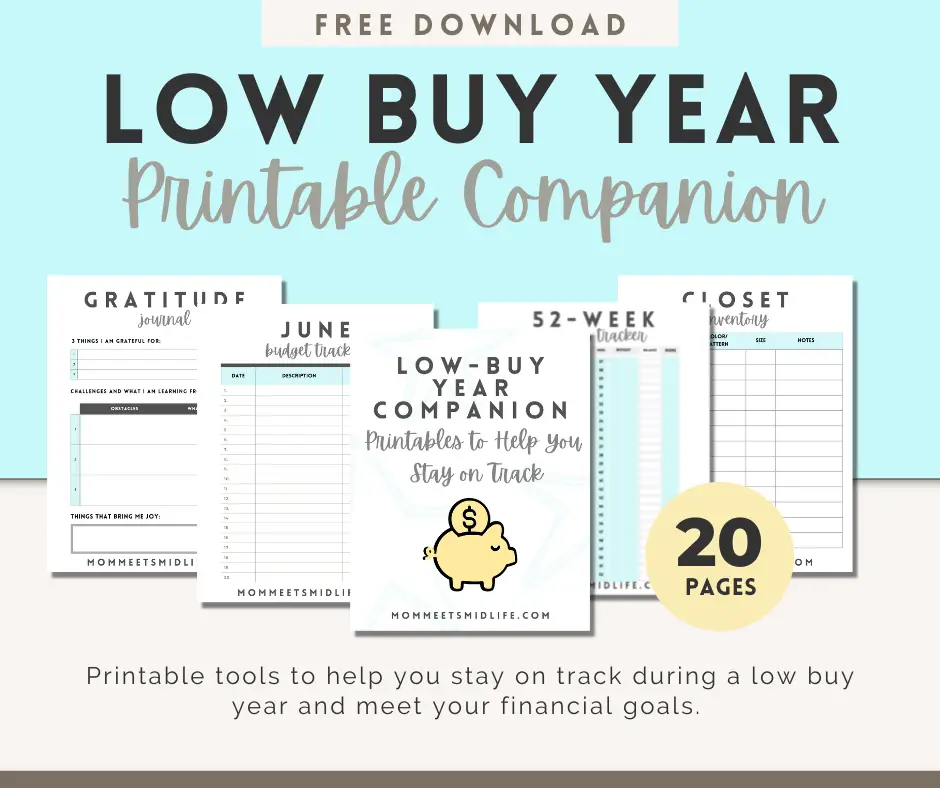
Trying a low buy year can be a challenging but rewarding experience. By setting a strict budget and prioritizing your spending, you can reduce financial stress, increase savings, and change your spending habits for the better. If you’re looking to improve your financial situation and take control of your money, a low buy year may be just what you need.
Don’t forget to give yourself some grace! This is key anytime you are trying to make lifestyle changes.
Have you ever completed a low buy year? How did it go?
Sincerely,
Erin
